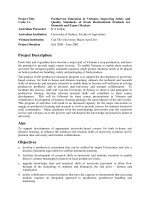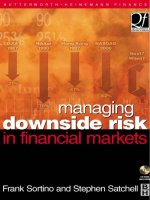Extreme Weather and Financial Markets pot
Bạn đang xem bản rút gọn của tài liệu. Xem và tải ngay bản đầy đủ của tài liệu tại đây (11.47 MB, 226 trang )
P1: OTA/XYZ P2: ABC
JWBT604-fm JWBT604-Oxley November 16, 2011 6:57 Printer: Courier Westford
i
P1: OTA/XYZ P2: ABC
JWBT604-fm JWBT604-Oxley November 16, 2011 6:57 Printer: Courier Westford
Extreme
Weather and
Financial
Markets
i
P1: OTA/XYZ P2: ABC
JWBT604-fm JWBT604-Oxley November 16, 2011 6:57 Printer: Courier Westford
Founded in 1807, John Wiley & Sons is the oldest independent publishing
company in the United States. With offices in North America, Europe, Aus-
tralia and Asia, Wiley is globally committed to developing and marketing
print and electronic products and services for our customers’ professional
and personal knowledge and understanding.
The Wiley Trading series features books by traders who have survived
the market’s ever changing temperament and have prospered—some by
reinventing systems, others by getting back to basics. Whether a novice
trader, professional or somewhere in-between, these books will provide
the advice and strategies needed to prosper today and well into the future.
For a list of available titles, visit our web site at www.WileyFinance.com.
ii
P1: OTA/XYZ P2: ABC
JWBT604-fm JWBT604-Oxley November 16, 2011 6:57 Printer: Courier Westford
Extreme
Weather and
Financial
Markets
Opportunities in Commodities
and Futures
LAWRENCE J. OXLEY
John Wiley & Sons, Inc.
iii
P1: OTA/XYZ P2: ABC
JWBT604-fm JWBT604-Oxley November 16, 2011 6:57 Printer: Courier Westford
Copyright
C
2012 by Lawrence J. Oxley. All rights reserved.
Published by John Wiley & Sons, Inc., Hoboken, New Jersey.
Published simultaneously in Canada.
No part of this publication may be reproduced, stored in a retrieval system, or transmitted in
any form or by any means, electronic, mechanical, photocopying, recording, scanning, or oth-
erwise, except as permitted under Section 107 or 108 of the 1976 United States Copyright Act,
without either the prior written permission of the Publisher, or authorization through payment
of the appropriate per-copy fee to the Copyright Clearance Center, Inc., 222 Rosewood Drive,
Danvers, MA 01923, (978) 750-8400, fax (978) 646-8600, or on the Web at www.copyright.com.
Requests to the Publisher for permission should be addressed to the Permissions Department,
John Wiley & Sons, Inc., 111 River Street, Hoboken, NJ 07030, (201) 748-6011, fax (201) 748-
6008, or online at />Limit of Liability/Disclaimer of Warranty: While the publisher and author have used their best
efforts in preparing this book, they make no representations or warranties with respect to the
accuracy or completeness of the contents of this book and specifically disclaim any implied
warranties of merchantability or fitness for a particular purpose. No warranty may be created
or extended by sales representatives or written sales materials. The advice and strategies con-
tained herein may not be suitable for your situation. You should consult with a professional
where appropriate. Neither the publisher nor author shall be liable for any loss of profit or
any other commercial damages, including but not limited to special, incidental, consequen-
tial, or other damages. The views expressed in this book are those of the author and do not
necessarily reflect the views of his current or any past employer.
For general information on our other products and services or for technical support, please
contact our Customer Care Department within the United States at (800) 762-2974, outside
the United States at (317) 572-3993 or fax (317) 572-4002.
Wiley also publishes its books in a variety of electronic formats. Some content that appears in
print may not be available in electronic books. For more information about Wiley products,
visit our web site at www.wiley.com.
Library of Congress Cataloging-in-Publication Data:
Oxley, Lawrence J., 1969–
Extreme weather and financial markets : opportunities in commodities and futures /
Lawrence J. Oxley.
p. cm.—(Wiley trading ; 538)
Includes index.
ISBN 978-1-118-14721-4 (cloth); ISBN 978-1-118-20445-0 (ebk);
ISBN 978-1-118-20446-7 (ebk); ISBN 978-1-118-20447-4 (ebk)
1. Commodity futures. 2. Investment analysis. I. Title.
HG6046.O85 2012
332.64
5—dc23
2011041418
Printed in the United States of America
10987654321
iv
P1: OTA/XYZ P2: ABC
JWBT604-fm JWBT604-Oxley November 16, 2011 6:57 Printer: Courier Westford
This book is dedicated to my three beautiful children,
Brittany, Megan, and Jeffrey Oxley.
v
P1: OTA/XYZ P2: ABC
JWBT604-fm JWBT604-Oxley November 16, 2011 6:57 Printer: Courier Westford
vi
P1: OTA/XYZ P2: ABC
JWBT604-fm JWBT604-Oxley November 16, 2011 6:57 Printer: Courier Westford
Contents
Preface xi
Acknowledgments xiii
CHAPTER 1 Commodities and Their
Current Stories 1
Jackpot Commodities 5
Neutral Commodities 26
Big Problem Commodities 37
Other Limited Opportunity Commodities 40
CHAPTER 2 Where to Invest: Stocks, Bonds,
or Futures? 41
CHAPTER 3 Global Climate Shock Number One:
Excess Snow and Ice 51
Salt 51
Snow Blowers 53
CHAPTER 4 Global Climate Shock Number Two:
Flooding Mines 55
Metallurgical (“Met”) Coal 56
Iron Ore 59
Copper 62
vii
P1: OTA/XYZ P2: ABC
JWBT604-fm JWBT604-Oxley November 16, 2011 6:57 Printer: Courier Westford
viii CONTENTS
Silver 64
Aluminum 66
Nickel 68
Platinum 71
Palladium 75
Rare Earth Elements 78
Potash 80
Mining Equipment Makers 82
CHAPTER 5 Global Climate Shock Number
Three: Farmland Droughts, Floods,
and Frost 87
Sugar 88
Coffee 89
Cotton 90
Cocoa 91
Corn 92
Soybeans 93
Wheat 93
Oranges 94
Tying Together All of the Agricultural Commodities 95
Fertilizers 103
Seeds and Agricultural Chemicals 105
Farmland Equipment Makers 108
CHAPTER 6 Global Climate Shock Number Four:
Hurricanes and Tornadoes 111
Independent Natural Gas Producers 111
Oil 117
Remaining Stocks to Benefit in Widespread Hurricanes 119
P1: OTA/XYZ P2: ABC
JWBT604-fm JWBT604-Oxley November 16, 2011 6:57 Printer: Courier Westford
Contents ix
CHAPTER 7 Global Climate Shock Number Five:
Drought-Induced Timberland Fires 123
CHAPTER 8 Real-Life Examples: Execution,
Results, and Timing 125
Hurricane Katrina Example 125
Floods in Eastern Australia Example 128
Russian Drought Example 130
Blizzards in Northeastern United States Example 132
Cocoa Bean Supply Shock in Early 2011 133
A Word on Corn 135
The Rules of Extreme Weather–Based Investing 136
CHAPTER 9 Playing Both Sides of the Coin 145
Met Coal Example 147
Iron Ore Example 148
Copper Example 149
Farmland Droughts/Floods Example 149
Additional Pair Trades 150
CHAPTER 10 Basic Principles of Commodity
Investing 155
Basic Supply and Demand 156
Understanding the Mathematics of Stock Prices and Cycles 157
Secular Rotation 160
Fundamental Rules to Live by with Commodity Investing 160
CHAPTER 11 Opportunities in the Bond Market 165
Opportunities in the Municipal Bond Market 178
P1: OTA/XYZ P2: ABC
JWBT604-fm JWBT604-Oxley November 16, 2011 6:57 Printer: Courier Westford
x CONTENTS
CHAPTER 12 Opportunities in the Foreign
Currency Exchange Market 181
Canadian Dollar 183
Australian Dollar 186
Other Commodity Currencies 187
CHAPTER 13 Basic Principles of Futures
Market Investing 191
Exchange-Traded Funds 197
Final Thoughts 199
About the Author 201
Index 203
P1: OTA/XYZ P2: ABC
JWBT604-preface JWBT604-Oxley November 4, 2011 15:44 Printer: Courier Westford
Preface
E
xtreme weather is hitting all regions of the globe with increasing
severity. Despite the damage that can and will be caused from these
extreme weather events, certain industries will nevertheless benefit
and certain industries will be hurt. It is the purpose of this book to identify
and evaluate the sectors, industries, companies, and more specifically the
particular stocks, bonds, and futures that will be the winners and losers
as extreme weather events continue to impact the Earth. Every investment
idea in this book will work under the current, global climate condition. To
the extent that these already existent extreme weather events get worse
via global climate change, the more lucrative the investment ideas in this
book become. The specialized definition of global warming as it relates to
extreme weather investing is described here.
Definition: Global Warming
The rising temperature of both the air and the oceans as a result
of a greenhouse effect due to excess pollution of carbon dioxide and
other greenhouse gases, leading to global climate shocks and extreme
weather events.
We have all been made very aware that the average global temperature
will rise as a result of global warming. When things like gasoline, natural
gas, and oil burn, they produce CO
2
(carbon dioxide), among other green-
house gases. The CO
2
accumulates in the Earth’s atmosphere, producing a
greenhouse effect on the Earth, thus driving up the average temperature of
both the air and the oceans over time.
However, that is only half the story. The burning of gasoline, natural
gas, and oil produces not only CO
2
but also water. So we are steadily also
increasing the quantity of water into the system that never existed before.
In addition, as the average air temperature in the atmosphere rises, the
more water the air is capable of holding. We will refer to this as global wa-
tering. This global watering, in combination with the increasing average
temperature, global warming, will have the effect of causing global climate
xi
P1: OTA/XYZ P2: ABC
JWBT604-preface JWBT604-Oxley November 4, 2011 15:44 Printer: Courier Westford
xii PREFACE
change. This could mean more rain, more snow, more ice, more droughts,
and more severe weather such as hurricanes and tornadoes. It could even
cause geographic shifts in weather patterns that are completely new to par-
ticular regions of the world. These effects are cumulative and will build
over time and therefore do not represent a cycle where things return back
to normal. The rapid growth of the emerging regions of the world, includ-
ing China and India, will exacerbate these effects. It is the persistence of
this pattern that provides the basis for this book.
The investment ideas in this book are geared for investors of all skill
levels from the beginner right through to the professional investor. It is
written in very straightforward and simple language, thus making the con-
cepts and ideas very easy to understand.
The chapters are split out by the various types of extreme weather
events to help the reader rapidly locate the applicable, relevant investment
ideas during extreme weather events. The detailed index also provides as-
sistance. Most importantly, the book is completely full of action plan ta-
bles that point out the specific company and commodity “biggest winners”
and “biggest losers” resulting from extreme weather events occurring any-
where in the world!
The inclusion of real-life examples and specific investing rules for the
extreme weather–based investor, as well as simplified tutorials on the ba-
sics of stock, bond, and futures market investing, all provide the reader
with the necessary tools to make money on the extensive list of investment
ideas discussed in this book.
Lawrence J. Oxley
P1: OTA/XYZ P2: ABC
JWBT604-ack JWBT604-Oxley November 7, 2011 9:49 Printer: Courier Westford
Acknowledgments
M
any people have played a part in the production of this book. In
particular, my sincere thanks goes out to Lynda Oxley, Theresa
Vitale, Sheila Doerr, and the numerous colleagues I have worked
with both in my years as an engineer and in my years as an investor.
L.J.O.
xiii
P1: OTA/XYZ P2: ABC
JWBT604-ack JWBT604-Oxley November 7, 2011 9:49 Printer: Courier Westford
xiv
P1: OTA
JWBT604-c01 JWBT604-Oxley November 17, 2011 15:56 Printer: Courier Westford
CHAPTER 1
Commodities
and Their
Current Stories
A
s we sit here waiting for the extreme global climate events to begin
to hit Planet Earth, we realize that they are already here. The follow-
ing headlines of events have already occurred, along with thousands
of others:
“Floods Swamp Eastern Australia”
“Droughts in Russia”
“Repeated Blizzards Cover the Northeastern Section of the United
States”
“Hurricane Devastates Southern States”
“Vancouver Breaks Record for Coldest Freeze”
“Drier-than-Normal Conditions Lead to Dozens of Fires Destroying
Timberlands”
“Heavy Rains Linked to Humans in Recent Study”
“Global Change Leads to Excessive Rain, Snow, and Flooding”
“Mudslides and Floods Destroy Homes”
“Sydney Sets Heat Wave Record”
There are many cynics in the world who do not believe that global cli-
mate change is occurring. The beauty of it, from an investor’s standpoint,
is that it doesn’t even matter because, as shown in the preceding news
events, we already have ample extreme weather events that will impact
the stock market (and the bond and futures markets as well). To the ex-
tent that the environmental scientists are correct and the effects of global
climate change do in fact get more frequent and powerful, the number of
1
P1: OTA
JWBT604-c01 JWBT604-Oxley November 17, 2011 15:56 Printer: Courier Westford
2 EXTREME WEATHER AND FINANCIAL MARKETS
weather-based investment opportunities will increase significantly. Every
investment idea in this book will work under today’s global climate condi-
tion and will get even more lucrative if global climate change continues.
So what is the tie that binds extreme weather and financial markets?
The tie that binds these two things together is commodity supply shocks.
The extreme weather-based specialized definition of supply shock is one
of the most critical things to understand in this entire book. It is the link
between extreme weather events and the stock market. Let me explain.
Definition: Supply Shock
The temporary and sometimes permanent elimination of the sup-
ply availability of a commodity resulting primarily from a global
climate shock or extreme weather event. The resultant spike in the
price of the affected commodity provides opportunity for investment
in multiple financial markets including primarily the stock market,
the bond market and the futures market. Equivalent price spike re-
actions can also occur as a result of political, organizational, and
major geologic events such as earthquakes.
It is also critically important to understand the extreme weather–based
specialized definition of a commodity.
Definition: Commodity
Bulk goods and basic materials including metals, grains, food, min-
erals and energy, all derived from natural resources, which may
or may not trade in the futures market. The price is subject to the
forces of supply and demand. Price is particularly sensitive to sup-
ply shocks associated with extreme weather events.
It is also critically important to understand the newly created definition
of shock value.
Definition: Shock Value
The amount of time a supply shock persists. The higher the number of
days, the greater is our window of time for entry into an investment.
The higher the number of days, the greater our potential holding pe-
riod of the investment.
As shown in the definitions, a sudden change in the availability or “sup-
ply” of a commodity causes the price of that commodity to change. More
specifically, if the supply of a material suddenly vanishes (due to an ex-
treme weather event such as a flood in eastern Australia, which is a recent
P1: OTA
JWBT604-c01 JWBT604-Oxley November 17, 2011 15:56 Printer: Courier Westford
Commodities and Their Current Stories 3
actual event that blocked the availability of coal in the region), then the
price will go higher because everyone will be fighting to get the remaining
supply and will be willing to pay more for it. The big winners in this case, of
course, are the remaining producers of the commodity in short supply that
are not involved in the devastated region. This is because they now get to
sell their product at a higher price. Higher prices mean higher profits, and
higher profits mean higher stock prices.
Now that we know that commodities are such a critical part of extreme
weather–based investing, it’s important for us to increase our general un-
derstanding of the various types of commodities and their relative attrac-
tiveness. The attractiveness of a commodity from an investor’s standpoint
is referring to the current supply/demand situation for that particular com-
modity. Examples always help to clarify what is meant by the attractive-
ness of a commodity. In the first example, we talk about the impact sugar
prices have on the chocolate maker Hershey; and in the second example,
we talk about a retail clothing store.
If the Hershey Company desperately needs sugar to make candy bars
but sugar has suddenly become unavailable because of recent heavy flood-
ing, the people at Hershey start to get very nervous because without the
sugar they will not be selling any candy bars. The fear that Hershey feels
causes them to increase the price they are willing to pay for sugar because
if they do not get the sugar, it will be very costly to them when they stop
selling their product. This is bad for Hershey because they are buying sugar,
but it is a jackpot for the sugar makers because the price of sugar is going
up. So, a sugar shortage results in decreased profits for Hershey and in-
creased profits for sugar makers.
Another classic example is retail clothing excess inventory after the
holidays have come to an end. In this case, the store desperately wants
to get rid of the excess inventory to make room for the new season and
the new fashions. Meanwhile, the holidays are already over and no one
is buying. This combination of too much supply and a shrinking demand
is a big problem for the retailer because the price of the clothing will
need to go much, much lower to make the product sell. These two ex-
amples can be captured in the generalized supply/demand table shown in
Figure 1.1. As shown in the table, when supplies are limited and demand
is strong, this is the best possible combination for any commodity and is
considered a jackpot, thus allowing the profits of the commodity producer
to rise.
Similarly, when supplies are high and demand is relatively weak, this
is a big problem for any commodity because the price of that commodity
is going to fall hard, thus causing the profits for the makers of that com-
modity to drop. The remaining two possible combinations are considered
neutral because supply and demand are both going in the same direction.
P1: OTA
JWBT604-c01 JWBT604-Oxley November 17, 2011 15:56 Printer: Courier Westford
4 EXTREME WEATHER AND FINANCIAL MARKETS
Lots of Supply Coming
Demand Shrinking Demand Growing
Very Little Supply Coming
Neutral
Neutral
Jackpot
Big Problem
FIGURE 1.1 Commodity Categories
For example, it is acceptable if supplies are growing as long as demand
is growing, too; and it is acceptable if demand is shrinking as long as the
supply side is staying stable to declining.
The exciting part about commodities is that the vast majority of them
fall into either the Jackpot or Neutral category and very few fall into the Big
Problem category. We will get into more detail shortly, but for now we will
simply list the major commodities and categorize them into the quadrants
shown in the table.
Jackpot
r
Copper
r
Corn
r
Wheat
r
Soybeans
r
Orange juice
r
Fertilizers
r
Metallurgical coal
r
Iron ore
r
Oil
r
Sugar
r
Cocoa beans
r
Cotton
r
Coffee
r
Silver
r
Gold
r
Platinum
r
Palladium
r
Rare earths
r
Potash
P1: OTA
JWBT604-c01 JWBT604-Oxley November 17, 2011 15:56 Printer: Courier Westford
Commodities and Their Current Stories 5
Neutral
r
Zinc
r
Aluminum
r
Steel
r
Nickel
r
Lead
r
Thermal coal
r
Soda ash
Big Problem
r
Natural gas
Limited Opportunity
r
Lean hogs
r
Live cattle
Granted, commodities are cyclical and their status changes over time,
but their current cycle is very sticky, meaning that global demand for com-
modities in general is growing (over the long haul) and simultaneously it is
getting harder and harder to find a good, quality supply of these materials.
This combination means the outlook for commodities over the long haul
is generally good. Now, what happens when a particular commodity over
the next 10 years happens to move from the Jackpot category to the Big
Problem category? Does that destroy our investment opportunities we talk
about in this book? No, absolutely not. Regardless of where a commodity
falls in the four categories, it will still respond quite favorably (i.e., price
of the commodity will go up and therefore the profits for the commodity
maker will go up, and hence the stock price of the commodity maker will
go up) in the event of a supply shock associated with global climate change.
Nevertheless, I include a discussion on the supply/demand status of each
commodity to help the reader understand these materials even better. In
addition, even though supply shocks from global climate change will help
any commodity, it is particularly juicy from an investing standpoint if it
falls within the Jackpot category.
JACKPOT COMMODITIES
Now we will go into some more detail on the story behind each of the major
commodities, starting with the Jackpot commodities.
P1: OTA
JWBT604-c01 JWBT604-Oxley November 17, 2011 15:56 Printer: Courier Westford
6 EXTREME WEATHER AND FINANCIAL MARKETS
Copper
Copper has among the healthiest fundamental outlooks for commodity ma-
terials. The supply/demand balance for copper remains tight despite the
fact that the United States residential and nonresidential construction mar-
kets remain soft but at least are finally nearing the bottom.
Figure 1.2 shows the end-market usage for copper. As the demand for
copper in China continues to grow and as construction demand in the
United States rebounds, the demand side of copper will become increas-
ingly attractive.
Despite very strong demand in China for copper, copper mine concen-
trations are not in China, thus greatly helping the supply-side story. Re-
member, there are a lot of people in China who need jobs. If copper mining
were geologically abundant in China, the decision to add jobs by adding
mining capacity would occur, but instead this is not a problem for this
commodity. Another supply-side dynamic that is favorable to copper is the
decreasing quality of the copper ore coming out of the mines. So, in many
cases around the world, despite increasing rock movement in the mines,
less copper is produced from the prior year, thus continuing to exacerbate
an already tight supply/demand balance, thus putting copper squarely into
the Jackpot category.
The global climate shock–type investment opportunities for copper re-
side in the stock market, the bond market, and the futures market, and
to a much lesser extent in the currency market, as we will cover in more
detail later.
Construction
33%
Consumer
Products
8%
Electrical
33%
Transportation
13%
Industrial
Machinery
13%
End-Market Usage for Copper (%)
FIGURE 1.2 End-Market Usage for Copper
Source: Freeport McMoRan public filings, 2010.
P1: OTA
JWBT604-c01 JWBT604-Oxley November 17, 2011 15:56 Printer: Courier Westford
Commodities and Their Current Stories 7
Corn
Corn, like copper, has both a favorable demand-side story and a favorable
supply-side story, thus again putting it squarely into the Jackpot category.
On the demand side, global population growth guarantees the need for
more food (see Figure 1.3 for the demand uses for corn).
Food is a nondiscretionary purchase. However, the increasing demand
for food gets turbocharged when looking at what’s happening in emerging
regions such as China. As the population in China gets wealthier, they tend
to migrate from eating strictly grain to instead incorporating beef, chicken,
and pork. It takes approximately eight pounds of grain to make one pound
of beef. It is this shifting dynamic in food consumption that provides the ex-
ponential upward slope in the demand curve. In addition, within the United
States, the decision has already been made to add up to 15 percent ethanol
to the gasoline pool. Ethanol is derived from corn. The need to convert
corn into ethanol to satisfy demand in the gasoline market puts even more
demand pressure onto corn. So the demand side of the corn analysis is
obviously a home run.
On the supply side, the story also looks good. Within the United States,
the opportunity to increase the available acres of farmland for growing
corn in the United States is very limited. The United States represents a
whopping 41 percent of global corn production. Even on a global scale,
Brazil is among the few places in the world where incremental farmland
acres are available. The tight supply and strongly growing demand for corn
makes corn a very attractive commodity in general, but importantly it also
meets the key criteria for making it susceptible to global climate shocks.
Specifically, it is produced in highly concentrated regions of the world (i.e.,
Feed &
Residuals
38%
Ethanol for
Fuel
26%
Food, Seed,
& Industrial
36%
U.S. Demand Uses for Corn
FIGURE 1.3 U.S. Demand Uses for Corn
Source: USDA, 2009.
P1: OTA
JWBT604-c01 JWBT604-Oxley November 17, 2011 15:56 Printer: Courier Westford
8 EXTREME WEATHER AND FINANCIAL MARKETS
the United States produces 41 percent of the global total) and therefore if
the Corn Belt within the United States sees widespread drought or flooding
conditions, then the price of corn will increase significantly, thus providing
us plenty of investment opportunities.
As will be shown, the primary weather-based investment opportunity
in corn lies in the futures market. There are also indirect investment op-
portunities related to corn in the stock market and corporate bond market.
Wheat
The story behind wheat is similar to that of corn in terms of the nondis-
cretionary demand for food globally. In fact, it is second only to rice as the
main human food crop and still ahead of corn. As global population grows,
so, too, does the demand for wheat consumption (see Figure 1.4 for the
domestic demand uses for wheat).
On the supply side, wheat is more diversified globally in production as
compared with corn. Nevertheless, the geographic concentration of pro-
duction is high enough to still allow the price of wheat to spike in the
event of a global climate shock in a particular wheat-producing region of
the world. The classic example was the severe drought in Russia in the
summer of 2010. Although Russia represents only 9 percent of the global
production of wheat, it was still a large enough quantity to drive up wheat
prices. The bottom line for wheat is that the combination of a healthy de-
mand side along with limited acreage on the supply side places wheat into
the Jackpot category.
Seed
6%
Feed &
Residuals
13%
Food
81%
U.S. Demand Use for Wheat
FIGURE 1.4 U.S. Demand Use for Wheat
Source: USDA, 2010.
P1: OTA
JWBT604-c01 JWBT604-Oxley November 17, 2011 15:56 Printer: Courier Westford
Commodities and Their Current Stories 9
The primary weather-based investment opportunity in wheat lies in the
futures market.
Soybeans
The story behind soybeans is similar to that of corn in terms of the nondis-
cretionary demand for food globally. Therefore, there is generally a pos-
itive correlation between the demand for soybeans globally and global
population. The link to population growth enables a healthy demand-side
outlook for soybeans. However, the link to population growth is actually
better than it appears. As we talked about in the corn section, the most
exciting demand driver for soybeans is related to the migration of the daily
diet of people in the emerging markets, such as China, toward higher pro-
tein intake in the form of beef, chicken, and pork as opposed to the histor-
ically traditional grain-based diets. As we talked about in the corn section,
eight pounds of grains such as soybeans are required to produce only one
pound of beef. This is a very powerful positive on the demand side for soy-
beans (see Figure 1.5 for the demand uses for soybeans).
On the supply side, soybeans have an exciting story, too. Their global,
geographic concentration of production is high, meaning there are only
a few geographies in the world where soybeans are made as well as a
limited quantity of acres within each geography. This is very favorable
because it lends itself to global climate shock–type investing. In other
words, when a region of the world that produces soybeans is racked with
severe drought or severe flooding, the price of soybeans goes up and
Other
15%
Soybean Meal
& Vegetable
Oil
85%
U.S. Demand Uses for Soybeans
FIGURE 1.5 U.S. Demand Uses for Soybeans
Source: USDA, 2010.
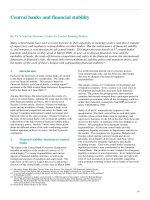
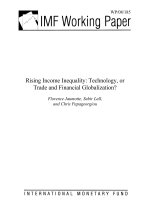
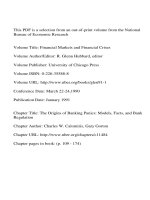
![extreme weather and financial markets [electronic resource] opportunities in commodities and futures](https://media.store123doc.com/images/document/14/y/ok/medium_okc1401382446.jpg)
